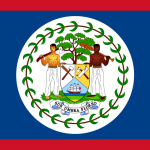Is Pan Caribbean Climate Action Partnership the answer to building resilience?

- Consolidating the building blocks at the Regional level
- Country initiatives as potential models for regional action
- How will the Caribbean proceed
- The Need for Community Engagement
- What will it cost
(Global Frontier Advisory and Development Services (GOFAD), 20 September) In our Blog (of September 9), we provided a sketch of the building blocks for climate resilience with special reference to the Caribbean. These building blocks, it was suggested, revolved around (a) proposals for implementing the Caribbean Community Climate Change Centre Strategic Plan 2011-2021, (b) tapping the expertise in climate science at UWI and other institutions of higher education and research (c) scaling up the prominence of CARICOM’s leadership in the Small Island Development States Climate agenda and (d) advocating for the delivery of global commitments such as the Paris Agreement, the UN and Multilateral agencies.
Consolidating the Building Blocks at the Regional level
It is important to note that the building blocks are consolidated in response to a mandate from CARICOM Heads of Government for the Caribbean Community Climate Change Centre (5Cs) to:
- Mainstream climate change adaptation strategies into the sustainable development agendas.
- Assist CARICOM states to switch to renewable and cleaner energy sources and reduce their vulnerability to the impact of a changing climate. [This is in keeping with the CARICOM Energy Policy and CARICOM Sustainable Energy Roadmap and Strategy (C-SERMS)].
- Develop an implementation plan supported by the region’s specialists, who have produced models for climate change and mitigation processes in Caribbean states and who play a major advisory role to the divisions in Ministries responsible for climate change.
- Explore the potential for exploiting hydro-electric, geothermal, wind and solar energy which is important for energy resilience.
Country initiatives as potential models for regional action
From among the multitude of programmes, being undertaken by CARICOM Countries, the following indicate a sample of initiatives:
- Reversing coral bleaching in Tobago due to global warming in an attempt to save thousands of species of fish and hundreds of sea creatures. This project is coordinated by the Institute of Marine Affairs (IMA) in Tobago and the US based National Oceanic and Atmospheric Administration (NOAA)
- With the imminent startup of “Guyana OIL” in 2020, the Oil Spill Contingency Energy Plan has been developed by the Energy Governance and Capacity Initiative (EGCI), in collaboration with the U.S. Interagency and Independent Expert Advisory Services.
- Policies for strengthening countries’ capacity to mitigate and adapt to climate change through policies for the management of forests. This project, “Forest and climate change in the Caribbean” is carried out by FAO in collaboration with Ministries of Forestry in six countries (Dominica, Grenada, Jamaica , St Lucia, St Vincent and the Grenadines and Trinidad and Tobago)
The Need for Community Engagement
In a very informative blog, “A call to Arms” – (September 10) , Winsome Leslie advised that lessons could be learned from community education programmes used in the islands of the South Pacific. She also recommends micro-financing institutions to expand a suite of products to include green loans to finance energy efficient solar projects to help the Caribbean to reduce its dependence on fossil fuels. See A Call to Arms -Time to Mobilise at the Local Level for Climate Resilience https://www.linkedin.com/pulse/call-arms-time-mobilize-local-level-climate-winsome-leslie
How will the Caribbean Proceed
It is clear from the building blocks, their consolidation in regional initiatives, the multitude of country programmes and the suggestion for community engagement, that
CARICOM Countries are fully aware of the challenges and the solutions related to climate resilience. A major problem reflected in the deleterious consequences of climate change is illustrated most recently in the fury of Hurricanes Irma and Maria (2017) and Dorian (2019). These were mainly due to circumstances not created by the Caribbean and over which it has little control. The architecture for a Caribbean response rests in the underlying vision set out in the Strategic Plan for Climate Change in the Caribbean 2011-2021 by the 5Cs. It recommends pursuing the “three one’s” principle: one coordinating unit, one strategic plan and one monitoring and evaluation system. It is a policy that was successfully implemented by the Pan Caribbean Partnership for HIV in the Caribbean with very positive results. It requires a concerted effort for synchronizing policies, rationalising programmes across sectors and institutions and sourcing funds. While GOFAD has some thoughts about the architecture for such a Pan Caribbean Climate Change Partnership, it is important to first engage the focal points for Climate Change, the CARICOM institutions – 5Cs and CDEMA and UWI. We will return to this issue of “functional cooperation and Climate action in the region.
What will this Cost?
A major question, how much will functional cooperation climate action cost is beyond the scope of this blog. The Caribbean countries and institutions are aware of funding options. Indeed, they have sourced support from the Global Environmental Facility (GEF); the Canadian Climate Change Development Fund; The Commonwealth Climate Finance Hub (2016) to support climate adaptation and mitigation; the Caribbean Climate Smart Accelerator (2018) in response to making the Caribbean the first climate smart zone, and the Regional Climate Resilient Building Facility (2019) to provide technical assistance and disaster insurance support.
The Global Commission on Adaptation (GCA) issued a report (September 10). The Commission led by former UN Secretary General Ban Ki moon and including Dr. The Hon Keith Mitchell, Prime Minister of Grenada, calls for global leadership on climate resilience. It finds that adaptation can lead to significant economic returns and that investing US$1.8 trillion globally from 2020 to 2030 in five climate adaptation areas could result in US$ 7.1 trillion in net benefits. It identifies the five areas: early warning systems, climate-resilient infrastructure, improved dryland agriculture, mangrove protection and investments in increasing water resource resilience. It states that these represent only a portion of total investments needed and total benefits available. The Caribbean environmental and development scientists need to come up with a cost -benefit projection for achieving climate resilience in accordance to the 5Cs strategic plan.
Conclusions
Filling the gaps for an effective architecture for a Pan Caribbean Climate Change Partnership and for sustainable funding in support of Climate resilience is a work in progress. Successful outcomes, however, can be achieved with political will and a commitment to unravelling the impediments to functional cooperation. This requires innovation that is transformative. In the final analysis, global solidarity is the main solution to this global problem.
Eddie Greene
Source: CARICOM TODAY

 Previous Post
Previous Post Next Post
Next Post